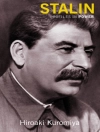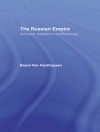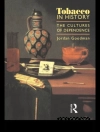Why is money more valuable than the paper on which it is printed? Monetarists link the value of money to its supply and demand, believing the latter depends on the total value of the commodities it circulates. According to Prabhat Patnaik, this logic is flawed. In his view, in any nonbarter economy, the value we assign to money is determined independently of its supply and demand.
Through an original and provocative critique of monetarism, Patnaik advances a revolutionary understanding of macroeconomics that highlights the ‘propertyist’ position of Karl Marx and John Maynard Keynes. Unlike the usual division between ‘classical’ economists (e.g., David Ricardo and Marx) and the ‘marginalists’ (e.g., Carl Menger, William Stanley Jevons, and Léon Walras), Patnaik places ‘monetarists, ‘ including Ricardo, on one side, while grouping propertyist writers like Marx, Keynes, and Rosa Luxemburg on the other. This second group subscribes to the idea that the value of money is given from outside the realm of supply and demand, therefore making money a form in which wealth is held. The fact that money is held as wealth in turn gives rise to the possibility of deficiency of aggregate demand under capitalism.
It is no accident that this possibility was highlighted by Marx and Keynes while going largely unrecognized by Ricardo and contemporary monetarists. At the same time, Patnaik points to a weakness in the Marx-Keynes traditionnamely, its lack of any satisfactory explanation of why the value of money, determined from outside the realm of supply and demand, remains relatively stable over long stretches of time. The answer to this question lies in the fact that capitalism is not a self-contained system but is born from a precapitalist setting with which it interacts and where it creates massive labor reserves that, in turn, impart stability to the value of money. Patnaik’s theory of money, then, is also a theory of imperialism, and he concludes with a discussion of the contemporary international monetary system, which he terms the ‘oil-dollar’ standard.
Daftar Isi
Preface
Introduction
1. The Great Divide in Economics
Part I. The Infirmity of Monetarism
2. The Monetarist Theory
3. Equilibrium and Historical Time
4. The Modus Operandi of Monetarist Theory
5. The Cash Transactions Approach to Monetarism
6. An Excursus on Rational-Expectation Equilibria
7. An Excursus on Methodological Individualism
8. An Excursus on Walrasian Equilibrium and Capitalist Production
Part II. The Superiority of Propertyism
9. A Critique of Ricardo’s Theory of Money
10. Marx on the Value of Money
11. An Excursus on Marx’s Theory of Value
12. Marx’s Solution to a Dilemma
13. Alternative Interpretations of Keynes
14. A Digression on a Keynesian Dilemma
15. Marx, Keynes, and Propertyism
Part III. The Incompleteness of Propertyism
16. The Incompleteness of Propertyism
17. A Solution to the Incompleteness
18. Capitalism as a Mode of Production
19. Money in the World Economy
20. Capitalism and Imperialism
Notes
Bibliography
Index
Tentang Penulis
Prabhat Patnaik, a well-known radical economist, holds the Sukhamoy Chakravarty Chair at the Jawaharlal Nehru University, New Delhi. He has written extensively on macroeconomics, development economics, and political economy. His books include
Accumulation and Stability Under Capitalism and
The Retreat to Unfreedom.












